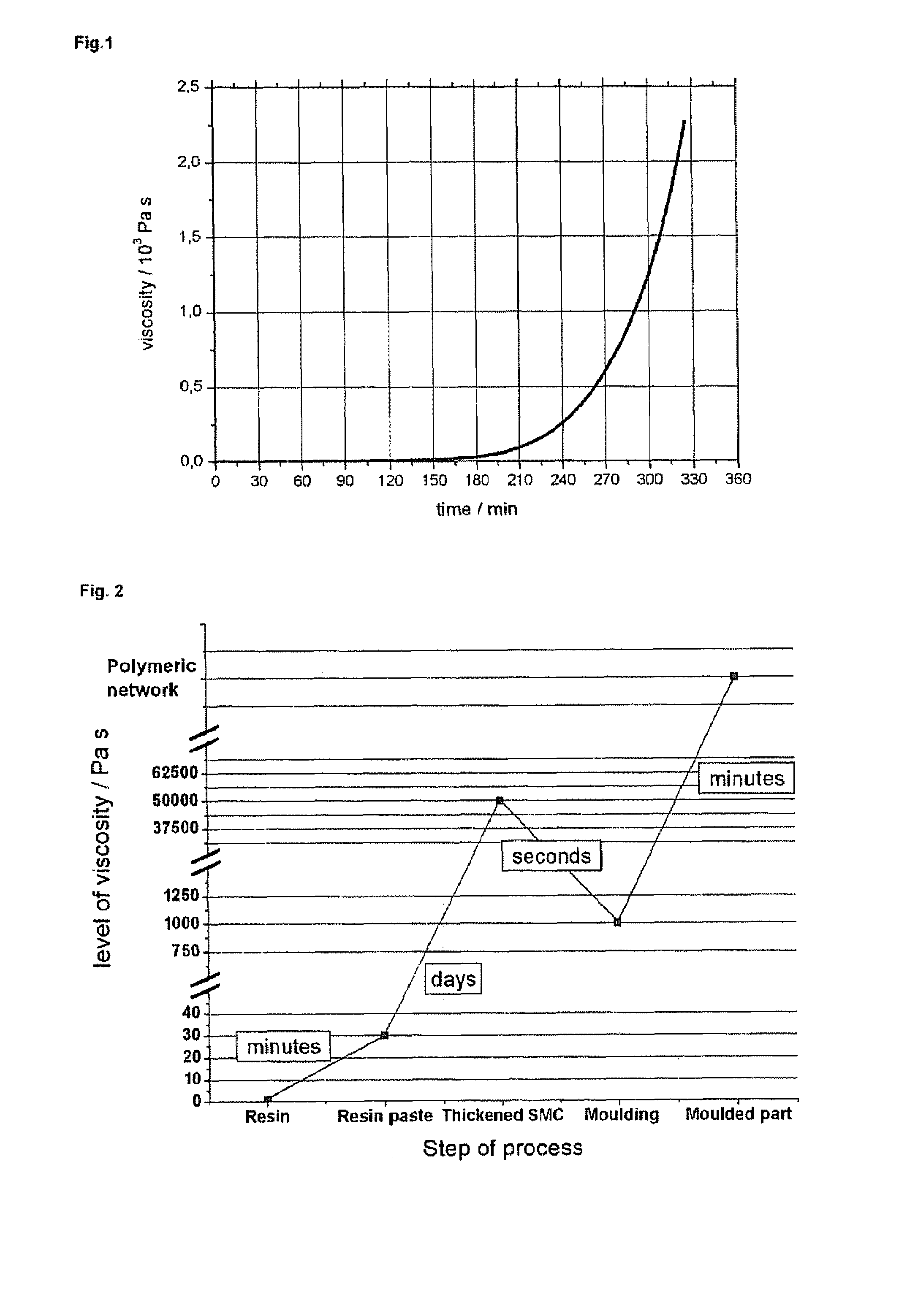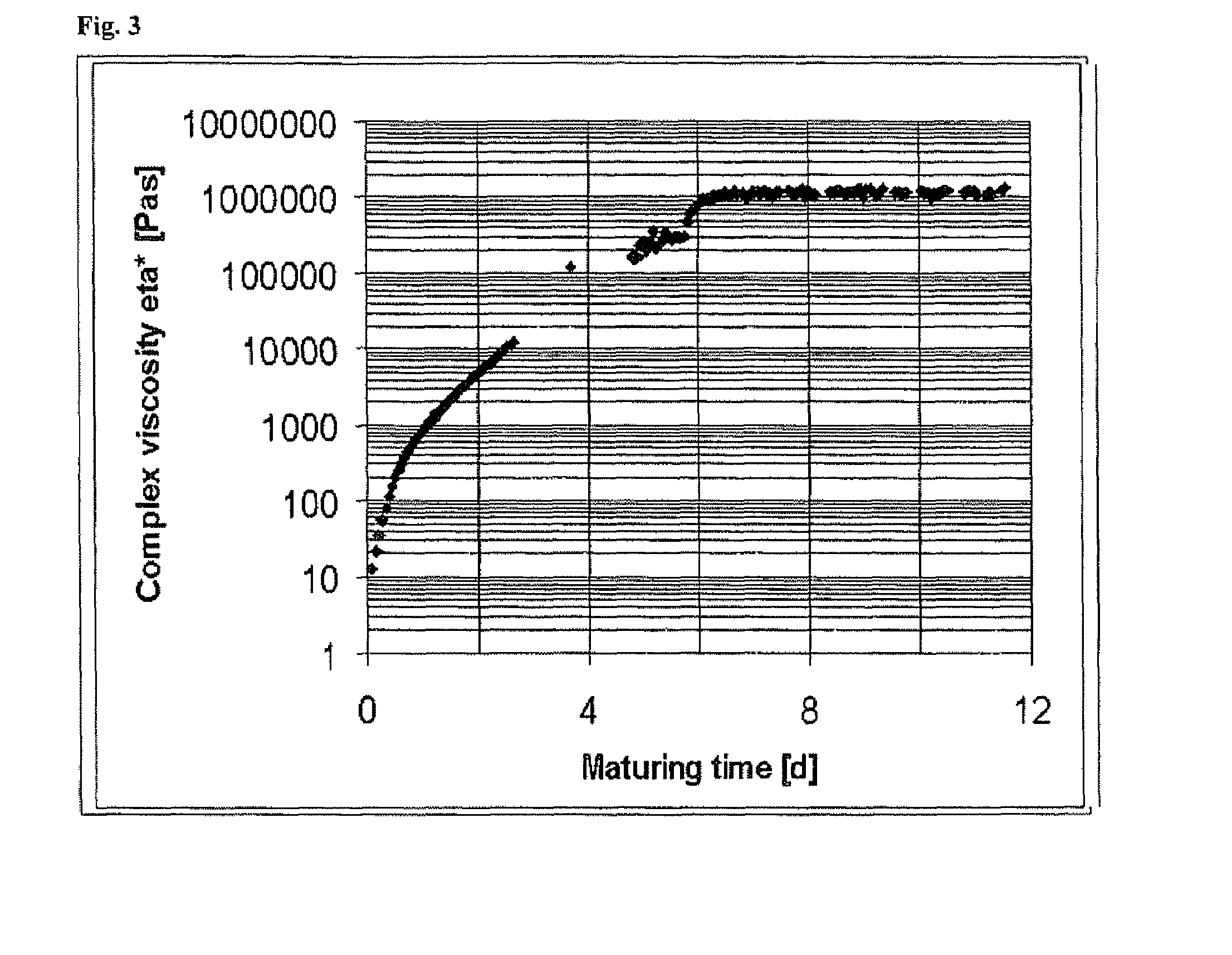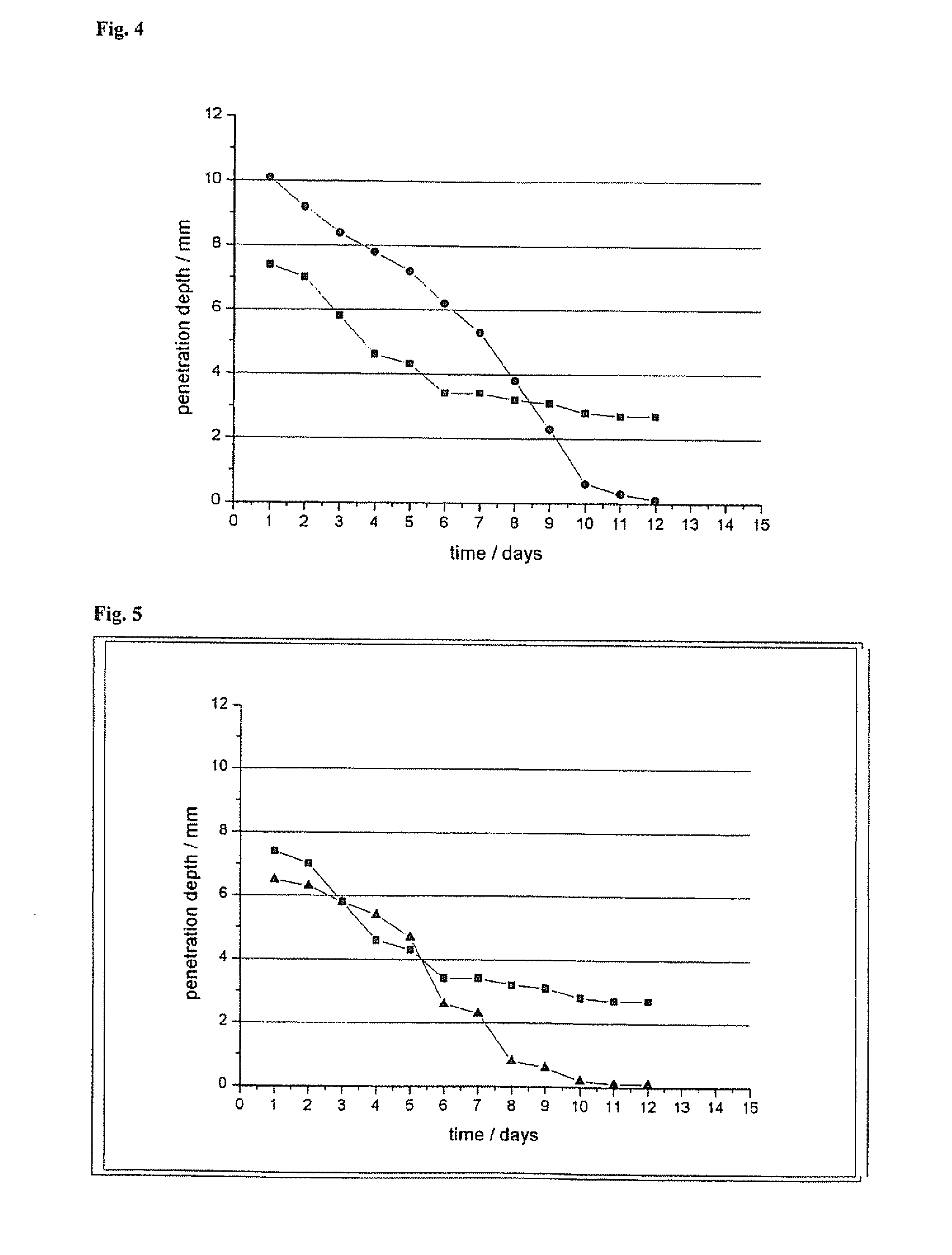Sheet molding compounds (SMC), thick molding compounds (TMC), and bulk molding compounds (BMC) comprising thermosetting resins based on renewable resources
a thermosetting resin and sheet molding technology, applied in the field of sheet molding compound (smc), bulk molding compound (bmc), or thick molding compound (tmc), can solve the problems of low glass transition temperature (tsub>g /sub>values), poor mechanical properties of thermoplastic materials, and limited applicability of low-temperature glass transition temperatures
- Summary
- Abstract
- Description
- Claims
- Application Information
AI Technical Summary
Benefits of technology
Problems solved by technology
Method used
Image
Examples
example 2
Thickening with Quaternary Ammonium-Charged Montmorillonite
[0180]Montmorillonite with an average particle size of 60 μm was charged with trimethylcetylammonium ions to its capacity limit 4.2 wt. % of the charged layer silicate was mixed with 5.0 wt. % of 1,4-cyclohexanedimethanol diglycidyl ether (Polypox® R11, UPPC AG, Mietingen-Baltringen, Germany) which was vacuum distilled before use, 49.3 wt. % of epoxidized linseed oil with an epoxy number of 0.52, 37.3 wt. % of methyltetrahydrophthalic anhydride with an equivalent mass of 183 g / eq and 4.2 wt. % of the initiator / accelerator solution of Example 1.
[0181]The mixture was packed into a PE film. After a maturing time of 14 days the product possessed a leather-like consistency, the film could be removed and the product could be molded at a temperature of 140° C. and cured to obtain a hard duromeric material.
example 3
Thickening with Mixed Diepoxides
[0182]3.0 wt. % of methyl 10-aminodecanoate were mixed with 11.8 wt. % of limonene dioxide, 52.5 wt. % of epoxidized linseed oil with an epoxy number of 0.56, 29.7 wt. % of citraconic anhydride with an equivalent mass of 120 g / eq, and 4.0 wt. % of an initiator / accelerator solution made of 57 wt. % of 1,3-butanediol, 5 wt. % of citric acid and 38 wt. % diazabicyclooctane (DABCO®).
[0183]The mixture was packed into a PE film. After a maturing time of 10 days the product possessed a leather-like consistency, the film could be removed and the product could be molded at a temperature of 140° C. and cured to obtain a had duromeric material.
example 4
Thickening with Amines and Cycloaliphatic Diepoxides
[0184]1.0 wt. % of the charged vermiculite of Example 1 was mixed with 4.8 wt. % of aminotriglycerides with an amine number of 500 (Merginanid® 500, Hobum Oleochemicals GmbH, Hamburg, Germany), 9.6 wt. % of 3,4-epoxycyclohexylmethyl 3′,4′-epoxycyclohexanecarboxylate, 45.9 wt. % of epoxidized linseed oil with an epoxy number of 0.52, 34.7 wt. % of methyltetrahydrophthalic anhydride with an equivalent mass of 183 g / eq and 4.0 wt. % of the initiator / -accelerator solution of Example 1.
[0185]The mixture was packed into a PE film. After a maturing time of 12 days the product possessed a leather-like consistency, the film could be removed and the product could be molded at a temperature of 160° C. and cured to obtain a hard duromeric material.
PUM
| Property | Measurement | Unit |
|---|---|---|
| diameter | aaaaa | aaaaa |
| linear density | aaaaa | aaaaa |
| linear density | aaaaa | aaaaa |
Abstract
Description
Claims
Application Information
 Login to View More
Login to View More - R&D
- Intellectual Property
- Life Sciences
- Materials
- Tech Scout
- Unparalleled Data Quality
- Higher Quality Content
- 60% Fewer Hallucinations
Browse by: Latest US Patents, China's latest patents, Technical Efficacy Thesaurus, Application Domain, Technology Topic, Popular Technical Reports.
© 2025 PatSnap. All rights reserved.Legal|Privacy policy|Modern Slavery Act Transparency Statement|Sitemap|About US| Contact US: help@patsnap.com



